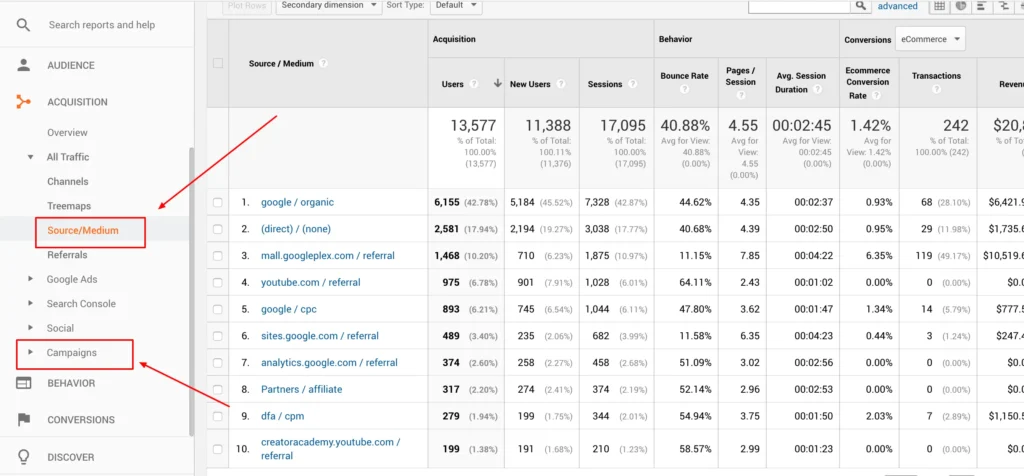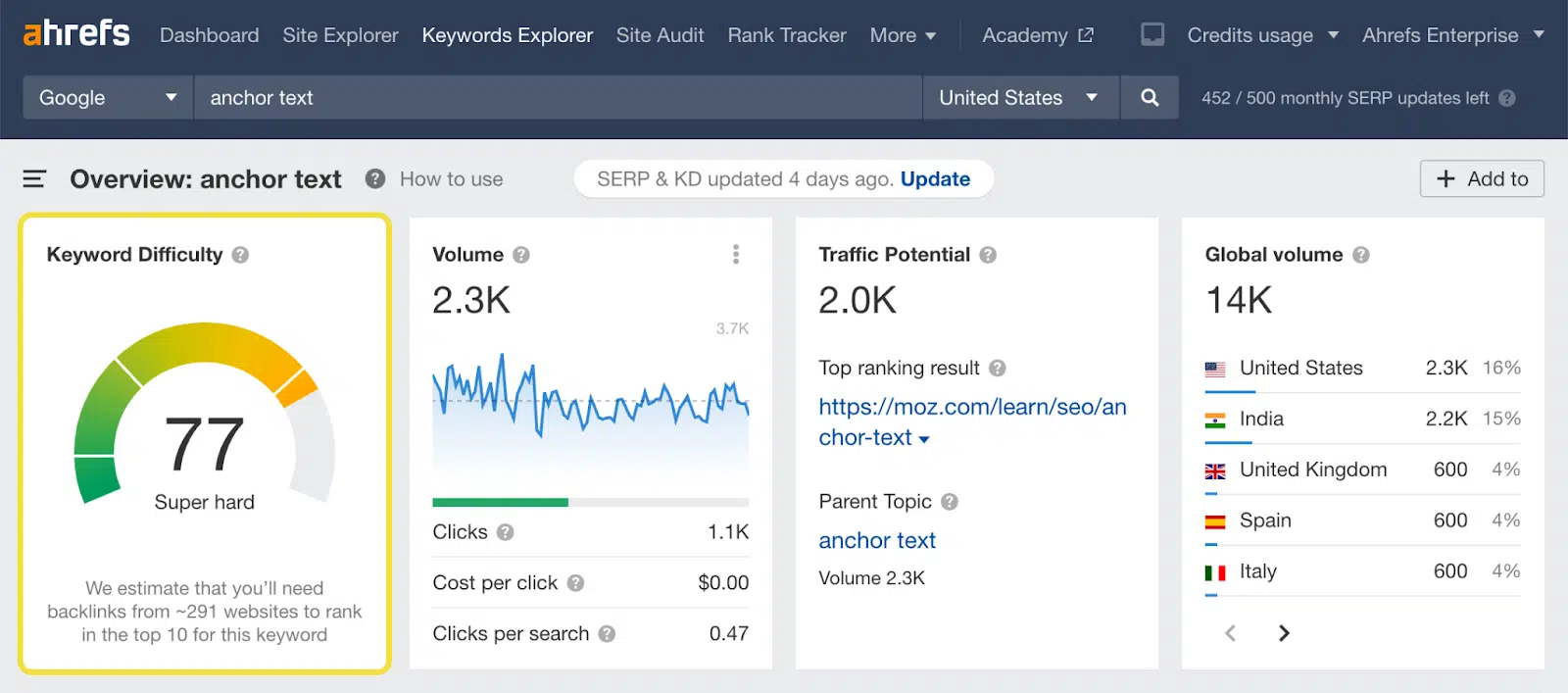In small business digital marketing, UTM tracking is an indispensable tool for understanding the effectiveness of your campaigns. With more than 76% of marketers relying on data-driven decisions to optimize their strategies, tracking every interaction becomes even more critical. But what exactly is UTM tracking, and why does it matter so much?
At its core, UTM tracking enables marketers to append additional information to URLs to monitor the source, medium, and campaign associated with each click. According to research, businesses that effectively use UTM parameters experience 20% higher conversion rates by refining their strategies based on real-time data. With proper UTM tags in place, you can track the customer journey across multiple touchpoints, from the first interaction to conversion—empowering you to improve your marketing performance continually.

What Does UTM Stand For?
UTM stands for Urchin Tracking Module. The term originated from a company called Urchin Software Corporation, which was one of the early web analytics platforms. Google acquired Urchin in 2005 and integrated its technology into what is now Google Analytics.
The Urchin Tracking Module (UTM) was developed as a way to track the effectiveness of marketing campaigns by appending parameters to URLs. These parameters, known as UTM parameters, allow marketers to track where traffic comes from and how users interact with their website. Today, the term UTM remains a standard in digital marketing, and the UTM tracking system continues to be a core component of tools like Google Analytics.
How UTM Tracking Works in Google Analytics
When you append UTM parameters to a URL, they pass additional data to Google Analytics, allowing you to track specific user behaviors tied to that link. The process is straightforward: add UTM parameters (which act like tags) to your URL, then analyze the data in Google Analytics to see where your traffic originated and how it interacts with your website.
For instance, say you’re running a small business social media campaign on Facebook and an email campaign for the same promotion. Adding different UTM tags to each link lets you easily see how many visitors came from Facebook versus email, what actions they took, and how they navigated your website.
- How UTM tracking benefits campaign performance: You can pinpoint which traffic sources convert the most, helping you optimize future campaigns. Without UTM parameters, all your traffic would appear as a single lump in your analytics, making it hard to determine which specific efforts drove results.
- The granular data from UTM tracking: You can track basic traffic and dig into more advanced insights like bounce rates, time on site, and pages per session for each source or campaign.
- Better budget allocation: With this data in hand, you can allocate your marketing budget more efficiently, focusing on channels and campaigns that produce the best return on investment (ROI).
By tracking user behavior via UTM parameters, you can make informed decisions that move the needle for your business. As part of our digital marketing services for small business, UTM tracking helps us find the right keyword, marketing channels, and content that builds your trust and authority
Best Practices for UTM Tracking in Campaigns
To get the most out of UTM tracking, you need to ensure you’re following best practices. Without structure, your UTM data could become inconsistent or misleading, making it difficult to analyze. Here’s how to ensure your UTM tracking stays clean and effective:
- Use consistent naming conventions across all campaigns: Naming consistency is crucial when you’re tracking campaigns across multiple channels. For example, if you use “utm_source=Facebook” in one campaign and “utm_source=FB” in another, you’ll end up with fragmented data in Google Analytics. Always use the same format (e.g., “facebook” instead of “FB” or “Facebook”) to keep your data unified.
- Tip: Keep all sources lowercase and use underscores between words (e.g., utm_source=google_ads).
- Tip: Use descriptive names for campaigns (e.g., utm_campaign=spring_sale_2024).
- Tip: Document your naming conventions in a shared file to ensure consistency across teams.
- Track campaigns separately to avoid overlap: If you’re running several campaigns at once, make sure you differentiate them using unique UTM parameters for each source and medium. For example, if you’re promoting a sale through both email and social media, create distinct UTM tags for each platform.
- Tip: Create a dedicated Google Sheet for each campaign’s UTM parameters.
- Tip: Assign different team members to track different campaign channels to avoid confusion.
- Tip: Test your links before going live to ensure that each source and medium is accurately tracked.
- Avoid common UTM tracking mistakes: One of the biggest mistakes marketers make is using capital letters or inconsistent syntax. Always use lowercase letters for all UTM parameters, and make sure your parameters are formatted correctly.
- Tip: Avoid spaces or special characters in UTM links.
- Tip: Check your links using Google’s Campaign URL Builder before deploying.
- Tip: Routinely audit your UTM links to ensure all data is being captured correctly in your analytics tools.

UTM Codes: A Simple Explanation of How They Work
For many digital marketers, understanding UTM codes is where the magic of tracking begins. UTM codes are snippets of text added to the end of a URL, and they contain five main parameters: source, medium, campaign, term, and content. These parameters allow you to track the effectiveness of your marketing campaigns with pinpoint accuracy.
What Are UTM Codes and Why They Matter?
At a basic level, UTM codes are essential for tracking specific marketing efforts. Whether you’re running a multi-channel campaign or targeting different audience segments, UTM codes help identify which tactics are driving traffic and conversions.
Each UTM code consists of the following components:
- utm_source: This tells you where the traffic came from (e.g., utm_source=facebook).
- utm_medium: This specifies the type of channel used, such as utm_medium=email, utm_medium=social, or utm_medium=paid_search.
- utm_campaign: This is used to define the specific campaign (e.g., utm_campaign=spring_sale or utm_campaign=new_product_launch).
These parameters give you valuable data that allows you to assess the performance of individual marketing initiatives. With UTM codes, you can answer critical questions, such as which channels are delivering the most leads, or which specific campaigns are generating the highest return on investment.
Generating UTM Codes with Free Tools
Building UTM codes may sound complicated, but there are numerous free tools to help you create them with ease. These tools save you time and ensure accuracy when adding tracking codes to your URLs.
Mind Your Business Newsletter
Business news shouldn’t put you to sleep. Each week, we deliver the stories you actually need to know—served with a fresh, lively twist that keeps you on your toes. Stay informed, stay relevant, and see how industry insights can propel your bottom line.
Subscribe to Mind Your Business
- Google’s UTM Builder: This is one of the most commonly used tools for creating UTM codes. With a simple interface, it allows you to input the details of your campaign and generate the corresponding URL with UTM tracking. Simply add your source, medium, and campaign, and the tool does the rest.
- Tip: Bookmark the Google UTM Builder for easy access during campaign creation.
- Tip: Use the pre-built fields to ensure that you don’t forget any critical parameters.
- Tip: Generate UTM links in bulk by using UTM.io or CampaignTrackly, both of which allow for batch processing.
- Manual creation of UTM codes: If you prefer more control, you can manually append UTM parameters to your URLs. For example, to track a Facebook ad campaign, your URL might look like this:
https://yourwebsite.com/?utm_source=facebook&utm_medium=social&utm_campaign=spring_sale.- Tip: When manually building UTM links, always double-check for typos.
- Tip: Keep a reference sheet of common UTM parameter combinations for easy access.
- Tip: Ensure your analytics platform is correctly set up to recognize and track these UTM links.
- Best practices for creating UTM codes: Whether you use a tool or manually create your codes, consistency is key. Always use clear, concise naming conventions to keep your data clean and organized. If you’re tracking multiple campaigns across different channels, you’ll quickly realize the value of having consistent UTM parameters.
- Tip: Establish a set format for each parameter (e.g., always use lowercase and underscores).
- Tip: Include a detailed description in the campaign name so it’s easily identifiable in reports.
- Tip: Avoid using overly complex or cryptic names in your utm_campaign or utm_source fields.
Real-Life Example of UTM Codes in Action
Let’s take a real-world example: a marketer running an email campaign for a spring sale. They can create a UTM code that tracks how many people clicked on the link in the email and made a purchase. By using UTM codes, they can differentiate traffic from their email campaign from that of a concurrent social media campaign. They may create a link like this:
This enables them to track how many visitors came through email, how many converted, and which specific link they clicked.

UTM Builder: An Essential Tool for Campaign Success
A UTM builder is an indispensable tool for digital marketers who want to simplify the creation of tracking URLs. Without a UTM builder, creating UTM codes for large campaigns would be tedious and prone to human error. Whether you’re working solo or as part of a team, using a UTM builder can save you time and ensure consistency across all your campaigns.
What Is a UTM Builder and Why Use It?
A UTM builder allows you to automate the process of generating URLs with UTM parameters, reducing the chance of errors. Instead of manually typing each URL’s parameters, you can use a tool that quickly adds the correct tracking codes to your URLs. This not only saves you time but also ensures that your UTM links are formatted consistently.
- Ensures consistent tracking across campaigns: A UTM builder guarantees that each URL contains the correct parameters. This is particularly useful for large teams or complex campaigns, where human error could lead to inaccurate reporting.
- Tip: Always use a UTM builder for large campaigns where multiple URLs are needed.
- Tip: Share access to your preferred builder with team members to ensure everyone uses the same format.
- Tip: Regularly review the builder’s output to ensure it meets your standards for naming conventions and clarity.
- Increases efficiency and productivity: With a UTM builder, you can generate multiple tracking URLs in minutes rather than hours. This efficiency can be a game changer for businesses running multi-channel or multi-platform campaigns.
- Tip: Use tools like UTM.io or Google’s Campaign URL Builder to speed up the creation process.
- Tip: If running multiple campaigns, save time by using bulk URL builders that allow you to generate multiple UTM links at once.
- Tip: Consider tools that allow you to save and manage your UTM campaigns for easy access later.
- Helps manage and track large-scale campaigns: For larger marketing campaigns with multiple assets, a UTM builder allows you to easily organize and track performance by generating URLs that can be managed from a central location.
- Tip: Use a UTM management tool like CampaignTrackly to keep all campaign links organized.
- Tip: Automate the process of adding UTM codes to your email marketing links or social ads with integrated tools like HubSpot or Buffer.
- Tip: For paid ad campaigns, ensure your UTM builder is integrated with your ad platform to streamline tracking setup.
How to Use a UTM Builder for Your Campaigns
Using a UTM builder is straightforward and requires minimal technical knowledge. Simply enter the relevant details (source, medium, campaign, etc.), and the tool will automatically generate a URL with the correct UTM parameters.
- Fill in the key fields: Start by inputting the source, medium, and campaign name. Optionally, you can add utm_term and utm_content for more granular tracking.
- Tip: Always prioritize the main fields: utm_source, utm_medium, and utm_campaign.
- Tip: If you’re running an A/B test, use utm_content to differentiate between different versions of your ads or emails.
- Tip: Keep your terms consistent—don’t switch between different naming conventions mid-campaign.
- Generate the URL with UTM parameters: Once you’ve filled in the required fields, the tool will generate a URL with all the appropriate UTM parameters attached. This URL can be used in your campaign, ensuring that all traffic can be tracked effectively.
- Tip: Copy the URL and test it before launching the campaign.
- Tip: Track each URL separately in Google Analytics to ensure accurate reporting.
- Tip: Keep a log of generated UTM links for future campaigns.
- Test your UTM links before deployment: After generating the URL, it’s essential to test it to ensure that all parameters are tracked correctly in your analytics software. Click the URL yourself to see if the traffic appears in your analytics dashboard.
- Tip: Run a small test campaign first to ensure all UTM links are working as expected.
- Tip: If you notice any discrepancies, revisit your UTM builder and double-check the parameters.
- Tip: Create a test environment in Google Analytics to trial UTM links without affecting your main data.
Top Tools for Building UTM Codes
There are several tools available that can help you create UTM codes with ease. Each has its own set of features and benefits:
- Google’s Campaign URL Builder: This free tool is ideal for marketers who want a simple, no-frills way to generate UTM codes. It’s great for one-off campaigns or smaller businesses.
- Tip: Google’s Campaign URL Builder is perfect for beginners due to its straightforward interface.
- Tip: Bookmark the tool for quick access during campaign planning.
- Tip: Use it in conjunction with Google Analytics for the best results.
- UTM.io: This tool offers more advanced features, such as UTM templates, team collaboration, and the ability to save and reuse UTM codes for future campaigns. It’s ideal for larger teams and complex campaigns.
- Tip: UTM.io is great for businesses running multiple campaigns across different channels.
- Tip: Save your most-used UTM parameters in UTM.io to save time when building new URLs.
- Tip: Leverage team collaboration features to keep everyone aligned on UTM naming conventions.
- CampaignTrackly: If you’re managing a large number of campaigns, CampaignTrackly’s automation features allow you to generate hundreds of tracking URLs at once. It also integrates directly with platforms like Google Ads and Facebook.
- Tip: Use CampaignTrackly if you’re running multi-channel campaigns across search, social, and email.
- Tip: Automate the tracking setup for paid ads using CampaignTrackly’s integrations.
- Tip: Monitor your campaign performance directly from the platform’s dashboard for easy analysis.
By using these tools, you can streamline your campaign setup process and ensure that all your links are properly tracked.

UTM Campaign: Tracking Your Marketing Campaigns Effectively
When running any digital marketing campaign, it’s essential to track its effectiveness using UTM campaigns. A UTM campaign refers to the specific set of UTM parameters attached to a URL that is used to track the performance of a particular marketing effort.
Setting Up a UTM Campaign for Accurate Tracking
To create a UTM campaign, you need to define the source, medium, and campaign name for each URL you generate. This allows you to segment your traffic based on where it came from, which channel was used, and which specific campaign the visitor interacted with.
- Define your UTM parameters: Start by determining the source (e.g., Google, Facebook, email) and the medium (e.g., organic, paid, social). The campaign name should reflect the specific marketing initiative you’re tracking.
- Tip: Choose a clear, descriptive name for your utm_campaign to make it easy to identify in reports.
- Tip: For multi-channel campaigns, keep your utm_source and utm_medium consistent while changing the campaign name.
- Tip: Use additional parameters like utm_content to track variations within the same campaign.
- Organize your UTM campaigns: For larger campaigns, it’s important to create a system for organizing your UTM parameters. This prevents confusion when running multiple campaigns at the same time.
- Tip: Create a spreadsheet to track all your UTM links, sources, and mediums.
- Tip: Assign unique campaign names for each initiative to avoid data overlap.
- Tip: Collaborate with your team to ensure everyone follows the same naming conventions.
- Monitor performance using UTM tracking: Once your UTM campaigns are live, use Google Analytics or another analytics platform to track the performance of each campaign. This allows you to see which sources and mediums are driving the most traffic and conversions.
- Tip: Filter your Google Analytics reports by utm_campaign to view data specific to each campaign.
- Tip: Look for trends across multiple UTM campaigns to identify your top-performing channels.
- Tip: Adjust your small business digital marketing strategy based on the insights gathered from your UTM tracking data.
Optimizing UTM Campaigns Based on Data Insights
One of the key benefits of using UTM parameters is the depth of insight you can gain into your marketing efforts. Once your UTM campaigns are live, you can use the data collected to refine and improve your campaigns.
- Track performance across different channels: By using the utm_source and utm_medium parameters, you can see how each marketing channel is performing. This allows you to allocate resources to the most effective channels.
- Tip: Compare performance between paid and organic traffic using utm_medium.
- Tip: Identify which social media platforms drive the most traffic using utm_source.
- Tip: Track individual ads within a campaign by adding utm_content parameters.
- Optimize based on conversion data: If you’re tracking conversions, UTM data can help you determine which campaigns are driving the most conversions. This insight allows you to refine your campaigns and focus on the strategies that deliver the best ROI.
- Tip: Use Google Analytics’ goal tracking feature to measure conversions from UTM campaigns.
- Tip: Look for campaigns with high traffic but low conversion rates, and adjust your messaging or offers accordingly.
- Tip: Reallocate your budget to the top-performing campaigns based on conversion data.
- Refine future campaigns using historical data: Once you’ve gathered enough data from your UTM campaigns, you can use that information to plan future marketing efforts. Look for patterns and trends that can inform your strategy moving forward.
- Tip: Review historical UTM data to identify seasonal trends in traffic and conversions.
- Tip: Use insights from previous campaigns to improve your targeting and messaging.
- Tip: Track the effectiveness of new channels or platforms by creating dedicated UTM campaigns for each one.

Wrapping Up UTM Tracking with UTM Parameters
In summary, UTM tracking with well-defined UTM parameters is a powerful tool enabling you to monitor your marketing efforts precisely. Using UTM codes to track different sources, mediums, and campaigns gives you valuable insight into where your traffic comes from and which campaigns drive the best results. Implementing best practices, using UTM builders, and analyzing your data in Google Analytics can significantly improve your campaign performance and marketing ROI.
To enhance your marketing strategy, I encourage you to explore The Good Fellas Growth Plan, a complete guide designed to help you build a winning small business digital marketing strategy tailored to your business. This plan covers everything from audience targeting to organic growth techniques without relying on paid ads.
Are you ready to grow your business and drive actual results? Download The Good Fellas Growth Plan and start transforming your marketing today.







